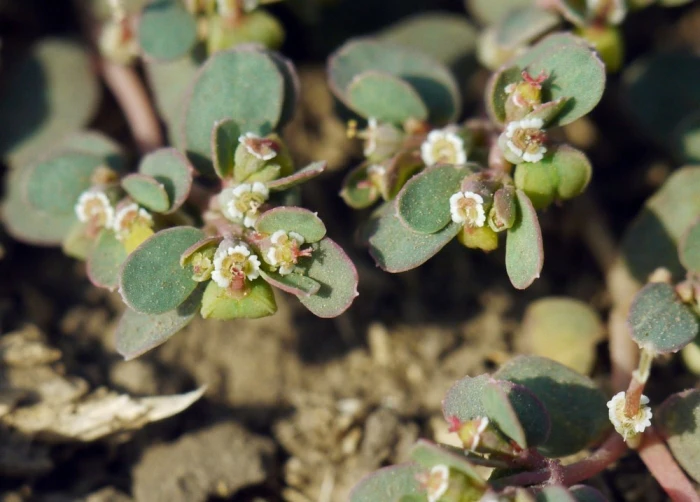Prostrate Spurge
(Euphorbia chamaesyce)
Prostrate Spurge (Euphorbia chamaesyce)
/
/

Roman
CC BY 4.0
Image By:
Roman
Recorded By:
Copyright:
CC BY 4.0
Copyright Notice:
Photo by: Roman | License Type: CC BY 4.0 | License URL: http://creativecommons.org/licenses/by/4.0/ | Rights Holder: Roman | Publisher: iNaturalist | Date Created: 2019-09-02T15:32Z |

























Estimated Native Range
Climate Requirements for Melrose Park, Illinois
| This Plant | Your Site | Plant Suitability for Your Location | ||
|---|---|---|---|---|
| • Precipitation | 0" - 153" | 37" | Aquatic | Aquatic |
| • High Temp. | 60°F - 113°F | 85°F | Your summer temperatures are normal for this plant. | Excellent |
| • Low Temp. | -3°F - 70°F | 15°F | Your winter temperatures are normal for this plant | Excellent |
This plant may not grow well at your location - your precipitation is too high.
Summary
Euphorbia chamaesyce, commonly known as Prostrate Spurge, is an annual herb native to a variety of habitats including open woodlands, grasslands, and disturbed sites across North Africa, Europe, and Asia. It typically forms a low-growing mat with stems that radiate from a central root system. The leaves are small, with oblique bases, and the plant produces tiny yellowish or reddish flowers throughout the summer months. The flowers are not particularly showy, but they are interesting upon close inspection. Prostrate Spurge is known for its ability to thrive in poor, compacted soils and its drought tolerance once established.
Prostrate Spurge is often used as a ground cover in xeriscaping due to its low water requirements and ability to cover bare ground quickly. It is also used in rock gardens and as a filler between stepping stones or pavers. In cultivation, it prefers full sun to part shade and can tolerate a range of soil types, provided they are well-drained. While it can be a useful plant in certain settings, it is also considered invasive in some regions outside its native range, where it can outcompete native vegetation and disrupt local ecosystems. Gardeners should be cautious and check local regulations before planting.CC BY-SA 4.0
Prostrate Spurge is often used as a ground cover in xeriscaping due to its low water requirements and ability to cover bare ground quickly. It is also used in rock gardens and as a filler between stepping stones or pavers. In cultivation, it prefers full sun to part shade and can tolerate a range of soil types, provided they are well-drained. While it can be a useful plant in certain settings, it is also considered invasive in some regions outside its native range, where it can outcompete native vegetation and disrupt local ecosystems. Gardeners should be cautious and check local regulations before planting.CC BY-SA 4.0
Plant Description
- Plant Type: Herb
- Height: 0.1-0.5 feet
- Width: 0.5-1 feet
- Growth Rate: Rapid
- Flower Color: Green
- Flowering Season: Summer
- Leaf Retention:
Growth Requirements
- Sun: Full Sun
- Water: Low
- Drainage: Fast
Common Uses
Drought Tolerant, Low Maintenance
Natural Habitat
Open woodlands, grasslands, and disturbed sites across North Africa, Europe, and Asia
Other Names
Common Names: Spurge
Scientific Names: Euphorbia chamaesyce, Anisophyllum chamaesyce, Anisophyllum vaticanum, Chamaesyce canescens, Chamaesyce canescens subsp. glabra, Chamaesyce canescens subsp. massiliensis, Chamaesyce chamaesyce, Chamaesyce libassii, Chamaesyce massiliensis
GBIF Accepted Name: Euphorbia chamaesyce